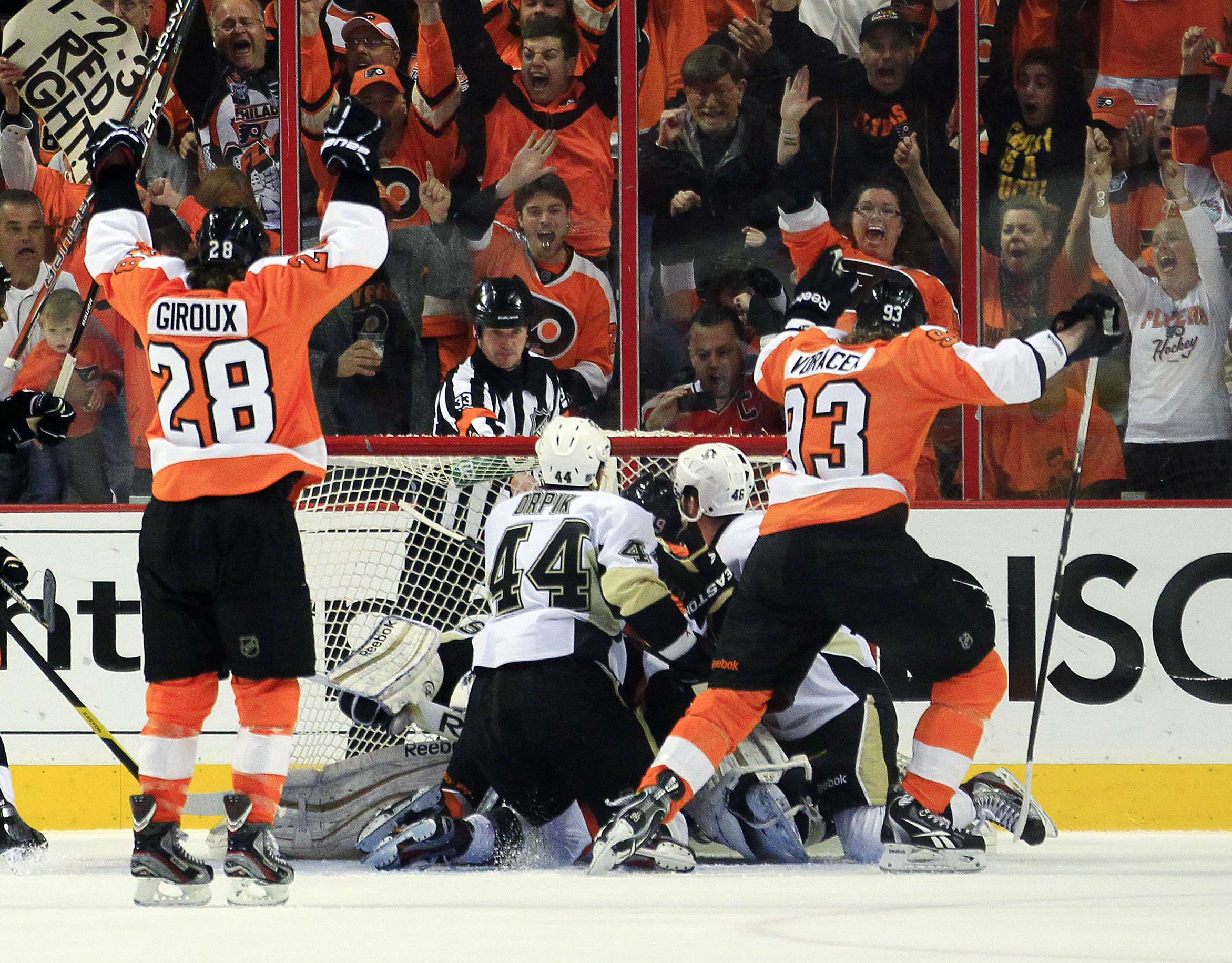5 Things: Flyers @ Penguins - A Critical Examination of Complexities
Thesis Statement
The rivalry between the Philadelphia Flyers and Pittsburgh Penguins, highlighted by their infamous "5 Things" game, is a multifaceted phenomenon that transcends mere sports entertainment and reflects the complexities of history, geography, culture, and identity. This essay critically examines the intricate layers of this rivalry, analyzing its multifaceted nature and broader implications.
Historical Enmity and Regional Proximity
One of the defining factors in the Flyers-Penguins rivalry is their shared history and geographic proximity. Both teams reside in the Mid-Atlantic region, with Philadelphia to the south and Pittsburgh to the west. This close proximity has fostered a sense of competition and "brotherly animosity" between the two cities, dating back to the pre-NHL era.
The rivalry intensified in the 1970s and 1980s, as both teams became perennial playoff contenders. Classic playoff battles, such as the infamous "Broad Street Bullies" era, contributed to the bitter animosity between the two franchises. The proximity of the cities also allowed for frequent intermingling of fans, further fueling the rivalry.
Cultural Disparities and Identity
Beyond the historical and geographical factors, the Flyers-Penguins rivalry is also shaped by cultural disparities and differences in identity. Philadelphia, known for its working-class roots and passionate sports culture, developed a reputation for a rough-and-tumble style of play and an unyielding loyalty to their team. In contrast, Pittsburgh, with its strong industrial and professional history, cultivated a more refined and analytical approach to hockey.
These cultural and identity differences manifested on the ice, as the Flyers embraced a physical and intimidating "Broad Street Hockey" style, while the Penguins relied on a more skilled and finesse-oriented game. This contrast further fueled the rivalry and created a narrative of "blue-collar toughness" versus "white-collar finesse."
The "5 Things" Incident: A Cultural Flashpoint
The rivalry reached a boiling point in 1992, with the infamous "5 Things" game. Following a particularly heated contest between the Flyers and Penguins, a local sportscaster listed "5 Things" that Penguins fans should be proud of. These included having a better team, a better coach, a better arena, and more passionate fans. The comments ignited a firestorm of controversy and accusations of arrogance and disrespect.
The "5 Things" incident became a cultural flashpoint, transcending the realm of sports and reflecting deeper tensions between the two cities. Philadelphians, already wary of Pittsburgh's perceived smugness, saw the comments as an affront to their pride and identity. The incident further fueled the rivalry and cemented its status as one of the most bitter and contentious in professional sports.
Economic and Political Dimensions
In recent years, the Flyers-Penguins rivalry has also gained economic and political dimensions. The NHL's expansion into the Northeast has created a new market for hockey and intensified competition between the two cities for fans, corporate sponsorships, and political influence.
The rivalry has been exploited by local politicians and business leaders as a rallying point for their constituents and an opportunity for economic development. For example, the construction of new sports facilities in both cities has been justified, in part, by the need to compete with the other city and attract fans and revenue.
Conclusion: A Complex Rivalry with Broader Implications
The Flyers-Penguins rivalry is a multifaceted and enduring phenomenon that transcends mere sports entertainment. It is rooted in history, geography, cultural disparities, and identity. The "5 Things" incident was a cultural flashpoint that further fueled the rivalry and reflected deeper tensions between the two cities.
Moreover, the rivalry has assumed economic and political dimensions, as both cities compete for fans, corporate sponsorships, and political influence. This complex and multifaceted nature highlights the broader implications of sports rivalries, as they can reflect and shape the social, cultural, and economic landscape of the communities they involve.
Detroit Pistons Starter Avoids Injury Report Vs Phoenix Suns
What Time Do Grocery Stores Close On Christmas Eve In Miami? Any Open On The Holiday?
NYT Connections Hints Today: Clues, Answers For December 24, 2024



